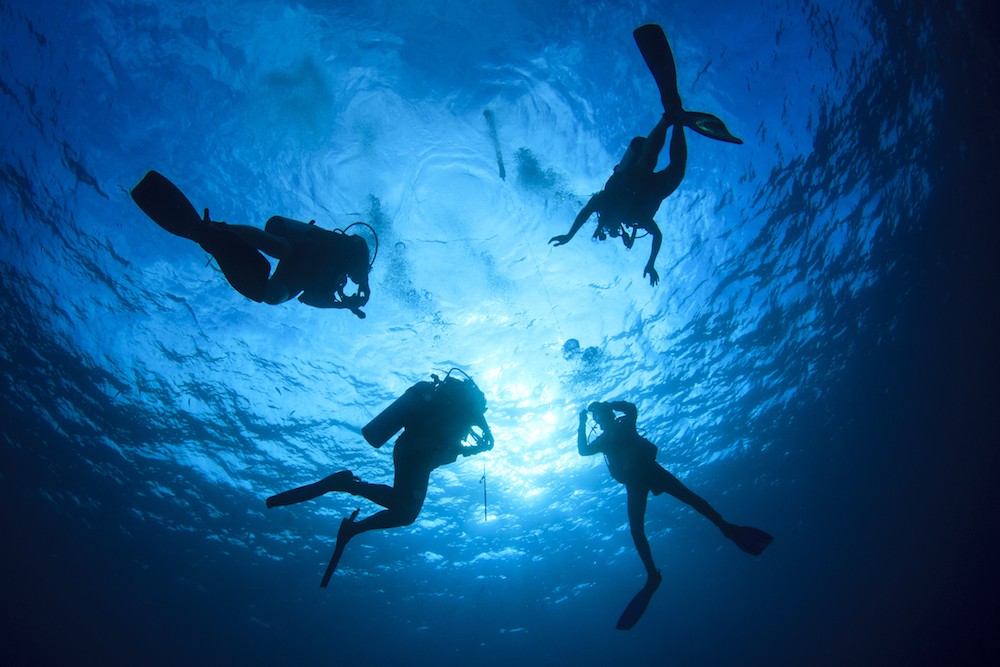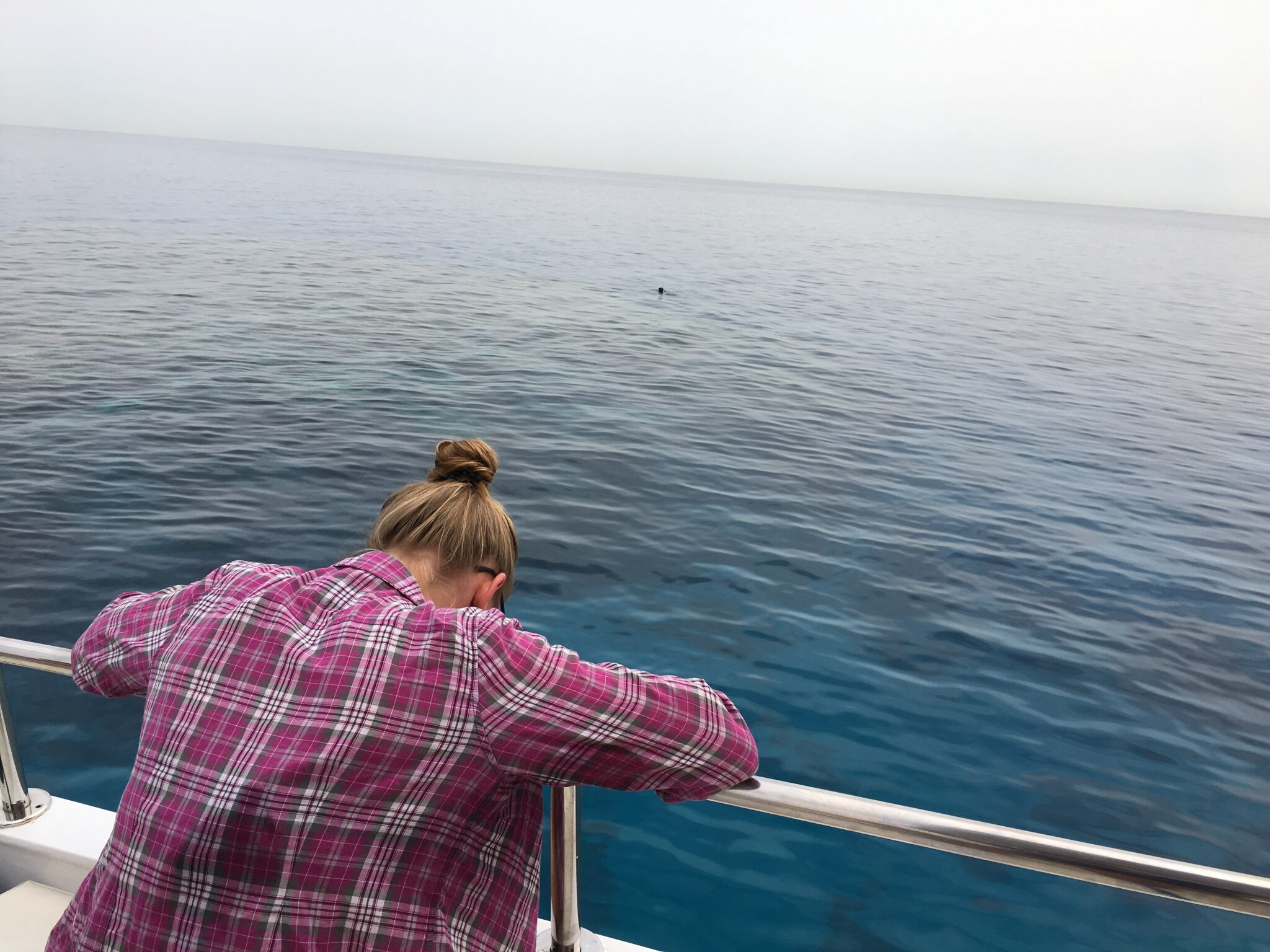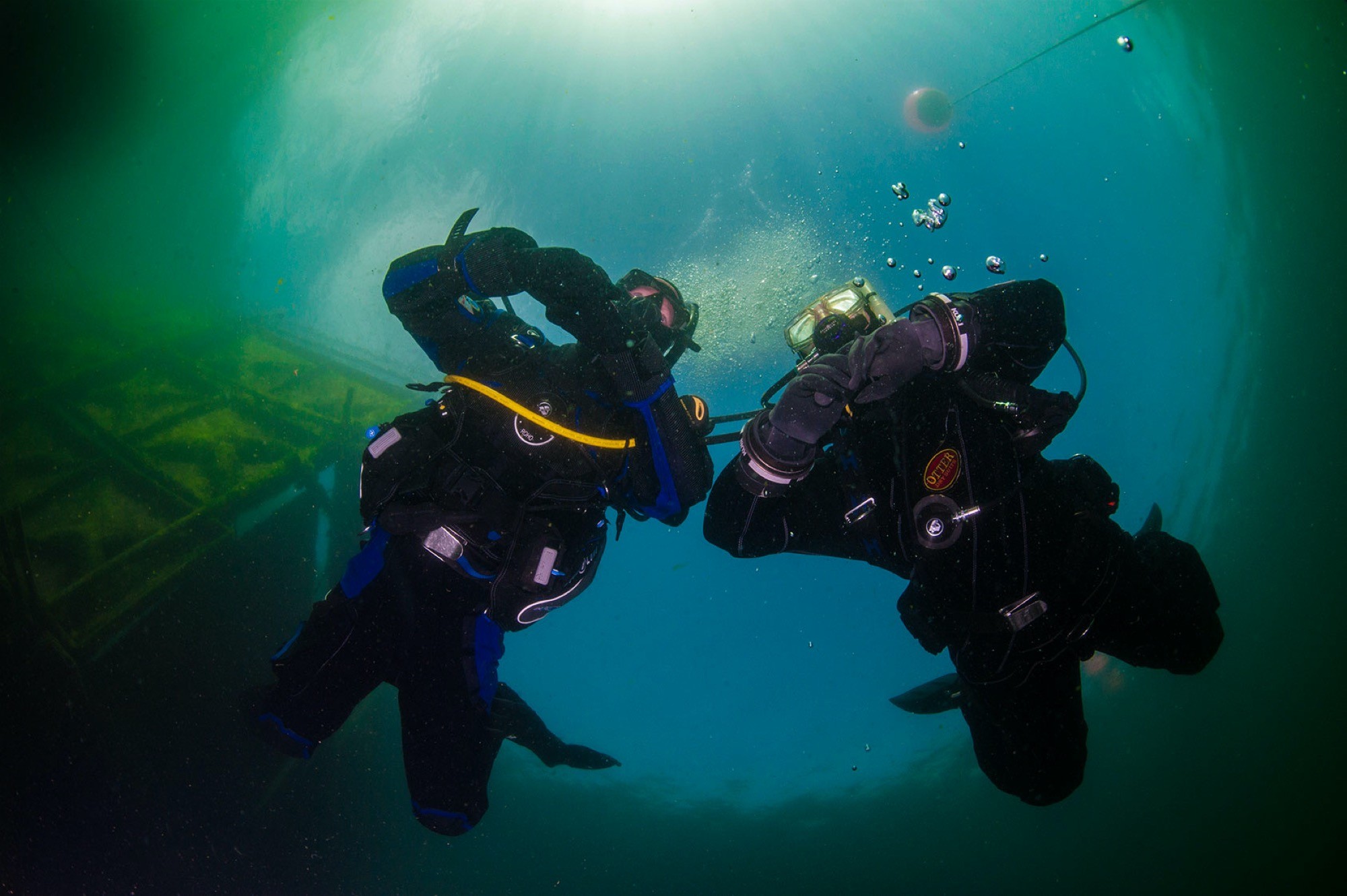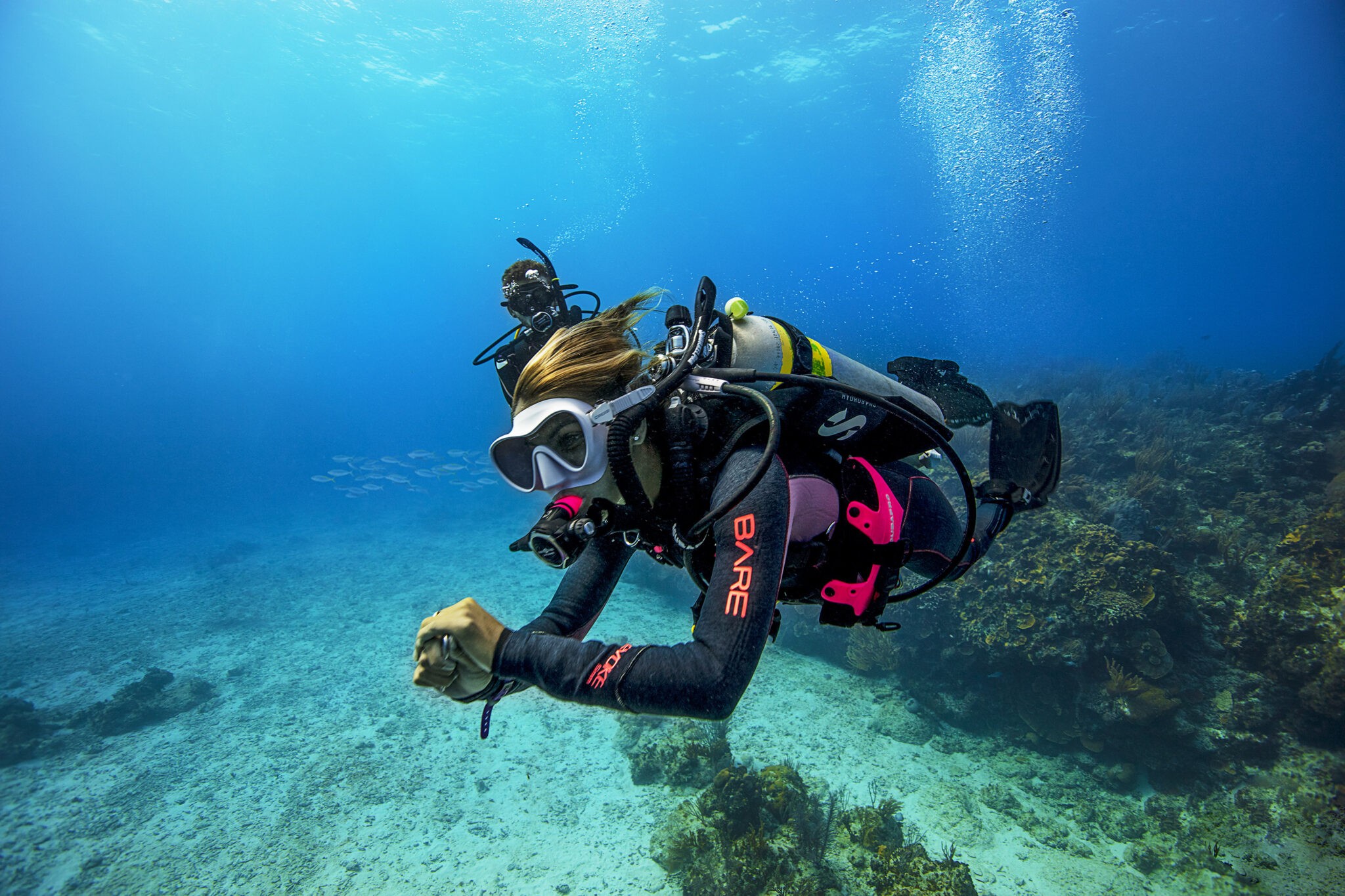What Is Bends Diving? This potentially serious condition, also known as decompression sickness (DCS), is a risk for scuba divers. At WHAT.EDU.VN, we aim to provide you with clear and comprehensive information to understand the bends, its causes, symptoms, prevention, and treatment, ensuring every dive is a safe dive; find the answers you need. Explore nitrogen bubbles, rapid ascent, and dive depth insights.
1. Defining Bends Diving: Decompression Sickness Explained
During scuba diving, the body absorbs nitrogen from the compressed air breathed in. The deeper the dive and the longer spent underwater, the more nitrogen gets absorbed into the bloodstream and tissues due to increased water pressure. This isn’t a problem when ascending slowly, as the nitrogen is gradually released through breathing. However, if one ascends too quickly, the rapid decrease in pressure causes the dissolved nitrogen to form bubbles in the body. These bubbles can block blood vessels, damage tissues, and cause a range of symptoms known as decompression sickness, or the bends. Divers should be aware of the risks of pressure change, nitrogen absorption, and bubble formation.
2. The History of the Bends: From Bridges to the Deep Sea
The term “the bends” originated in the late 19th century during the construction of the Brooklyn Bridge. Workers, known as “sandhogs,” spent long hours in pressurized caissons (watertight chambers) excavating the riverbed. When these workers emerged from the caissons and experienced a rapid decrease in pressure, they often developed symptoms similar to what scuba divers experience today. The workers would often become stooped over due to joint pain, resembling a fashionable pose called the “Grecian Bend,” hence the name. Now, this term is related to diving illness, diving medicine, and caisson disease.
3. Beyond Scuba Diving: Other Causes of Decompression Sickness
While commonly associated with scuba diving, decompression sickness isn’t exclusive to underwater activities. Any situation involving a rapid decrease in ambient pressure can trigger the formation of nitrogen bubbles in the body. This includes:
- High-Altitude Flights: Flying in unpressurized aircraft or experiencing rapid decompression in a pressurized aircraft can lead to DCS.
- Space Walks: Astronauts performing extravehicular activities (EVAs) or spacewalks are at risk due to the significant pressure difference between the spacecraft and the vacuum of space.
- Caisson Work: As mentioned earlier, construction workers in pressurized environments are susceptible to DCS.
- High-Altitude Mountain Climbing: Although less common, rapid ascents to high altitudes without proper acclimatization can also cause DCS.
These examples highlight that altitude sickness, space exposure, and rapid decompression are key risk factors.
4. Freediving and the Bends: Is it Possible?
Freedivers, who rely on holding their breath rather than using scuba gear, generally have a lower risk of developing decompression sickness. This is because they typically don’t absorb as much nitrogen into their bodies during their dives. However, it’s important to note that freedivers aren’t entirely immune. Deep, repetitive freedives can still lead to nitrogen absorption and subsequent bubble formation, especially if proper ascent techniques are not followed. Repetitive dives, breath-hold diving, and shallow water blackout are elements to consider.
5. Depth and DCS Risk: How Deep is Too Deep?
There’s no specific depth at which the bends are guaranteed to occur. The risk of DCS is influenced by a combination of factors, including depth, dive time, ascent rate, water temperature, and individual susceptibility. Generally, the deeper the dive and the longer the time spent at depth, the greater the amount of nitrogen absorbed and the higher the risk of developing DCS. Dive planning, depth limits, and bottom time awareness are crucial.
6. Recognizing the Signs: Symptoms of Decompression Sickness
Symptoms of decompression sickness can vary widely depending on the severity of the condition and the location of the nitrogen bubbles. They can range from mild discomfort to life-threatening complications. It’s crucial to be aware of the possible symptoms and seek immediate medical attention if any are suspected. Here’s a breakdown of common symptoms:
6.1. Common Symptoms
- Joint pain (often in the arms, legs, or back)
- Skin rash or itching
- Fatigue
- Headache
- Dizziness or vertigo
6.2. Serious Symptoms
- Numbness or tingling
- Muscle weakness
- Difficulty breathing
- Chest pain
- Confusion or disorientation
- Paralysis
- Loss of consciousness
Diver health, physical discomfort, and neurological issues should be monitored closely.
7. The Timeline: When Do Bends Symptoms Appear?
Decompression sickness symptoms typically manifest within 15 minutes to 12 hours after a dive. However, in some instances, symptoms can be delayed and appear up to 36 hours later. Due to this variability, it’s important to remain vigilant even after a seemingly uneventful dive. Post-dive monitoring, delayed onset, and symptom tracking are important.
8. Addressing Denial: Why Divers Might Ignore Symptoms
One of the challenges in diagnosing and treating decompression sickness is that divers may sometimes be reluctant to acknowledge or report their symptoms. Several factors can contribute to this denial:
- Embarrassment: Divers may feel embarrassed about experiencing symptoms, fearing judgment from their peers.
- Worry: Divers might not want to worry their dive buddies or family members.
- Misinterpretation: Symptoms like fatigue or headache can be easily mistaken for other ailments like sunburn, dehydration, or seasickness.
It’s vital for divers to recognize the seriousness of DCS and prioritize safety over ego. Buddy system, open communication, and risk acknowledgment are crucial.
9. Recovery from the Bends: Treatment and Outcomes
With prompt and appropriate treatment, most divers make a full recovery from decompression sickness. However, delays in treatment can lead to more severe complications and potentially long-term health issues. The key to successful recovery is early recognition and immediate action. Medical intervention, hyperbaric oxygen, and rehabilitation process play key roles.
10. The Treatment Protocol: How to Treat Decompression Sickness
The primary treatment for decompression sickness is recompression therapy. This involves placing the affected individual in a hyperbaric chamber, a specialized pressure vessel that simulates the pressure experienced at depth. By gradually increasing the pressure inside the chamber, the nitrogen bubbles in the body are compressed, allowing them to dissolve back into the bloodstream and be safely eliminated through the lungs. Divers Alert Network (DAN), emergency protocols, and chamber facilities are key resources.
11. Preventing the Bends: Safe Diving Practices
Prevention is always better than cure, and decompression sickness is no exception. By following established safe diving practices, divers can significantly reduce their risk of developing the bends.
11.1. Key Strategies
- Plan dives carefully: Use dive tables or dive computers to calculate safe dive times and depths, taking into account factors like nitrogen absorption and ascent rates.
- Ascend slowly: A slow, controlled ascent allows the body to gradually release excess nitrogen.
- Make safety stops: A safety stop at a specific depth (usually 15 feet or 5 meters) for a few minutes allows additional nitrogen to be released before surfacing.
- Stay hydrated: Dehydration can increase the risk of DCS. Drink plenty of fluids before and after diving.
- Avoid strenuous activity: Strenuous exercise after diving can increase blood flow and potentially trigger bubble formation.
- Avoid alcohol: Alcohol can also increase blood flow and interfere with nitrogen elimination.
- Avoid flying immediately after diving: Waiting a sufficient amount of time before flying allows the body to eliminate excess nitrogen.
Adherence to guidelines, dive computer use, and post-dive care are essential.
12. Scuba Diving Safety: Is it a Risky Sport?
Scuba diving is generally considered a safe activity when practiced responsibly and with proper training. While the risk of decompression sickness is real, it is relatively low when divers adhere to established safety guidelines and dive within their limits. Statistics suggest that diving accidents are infrequent compared to the number of dives undertaken each year. Training programs, safety protocols, and equipment reliability contribute to safety.
13. New to Diving? Learn the Essentials
If you’re new to scuba diving, enrolling in a certified training course like the PADI Open Water Diver course is the best way to learn the fundamentals of safe diving practices. These courses cover a wide range of topics, including dive planning, equipment use, underwater communication, and emergency procedures. Certification courses, skill development, and underwater environment awareness are crucial.
14. Already Certified? Expand Your Knowledge
Experienced divers can continue to enhance their skills and knowledge by pursuing advanced training courses. These courses can focus on specific diving environments, such as wreck diving or deep diving, or on specialized skills, such as underwater photography or search and recovery. Advanced training, specialized skills, and continued education are beneficial.
15. Understanding Bends Diving: Frequently Asked Questions
Here’s a compilation of frequently asked questions about decompression sickness, offering concise and informative answers:
| Question | Answer |
|---|---|
| What exactly causes the bends in diving? | The bends occur when nitrogen bubbles form in the body due to a rapid decrease in pressure, typically from ascending too quickly during a dive. |
| What are the early warning signs of decompression sickness? | Early signs include joint pain, skin rash, fatigue, and headache. More severe symptoms can include numbness, muscle weakness, and difficulty breathing. |
| How can I minimize my risk of getting the bends while diving? | Plan dives carefully, ascend slowly, make safety stops, stay hydrated, avoid strenuous activity and alcohol after diving, and wait a sufficient time before flying. |
| What should I do if I suspect someone has decompression sickness? | Provide emergency oxygen, contact emergency services immediately, and transport the affected individual to the nearest medical facility with a hyperbaric chamber. |
| Is it safe to fly after scuba diving? | It is generally recommended to wait at least 12-24 hours after a single dive and longer after multiple dives before flying to allow the body to eliminate excess nitrogen. |
| Can the bends cause long-term health problems? | Yes, delays in treatment can lead to more severe complications and potentially long-term health issues, including neurological damage and paralysis. |
| Are there any specific medical conditions that increase my risk of DCS? | Certain medical conditions, such as heart or lung problems, obesity, and dehydration, can increase the risk of DCS. Consult with a physician before diving if you have any underlying health concerns. |
| What is the role of a dive computer in preventing decompression sickness? | Dive computers continuously monitor depth, time, and ascent rate, providing real-time information to help divers stay within safe diving limits and minimize their risk of DCS. |
| Can freedivers get the bends? | Yes, although less common, freedivers can get the bends, especially after deep, repetitive dives. |
| Where can I find more information about decompression sickness? | You can find more information from reputable sources like Divers Alert Network (DAN), PADI, and medical professionals specializing in diving medicine. |





16. Need Answers? Ask WHAT.EDU.VN
Have more questions about diving safety, decompression sickness, or any other topic? Visit WHAT.EDU.VN to ask your questions and receive reliable answers from our community of experts. We’re here to provide you with the information you need to explore the world with confidence. Contact us at 888 Question City Plaza, Seattle, WA 98101, United States. Whatsapp: +1 (206) 555-7890. Website: WHAT.EDU.VN.
Don’t let unanswered questions hold you back; ask us anything at what.edu.vn and get the knowledge you need to dive safely.